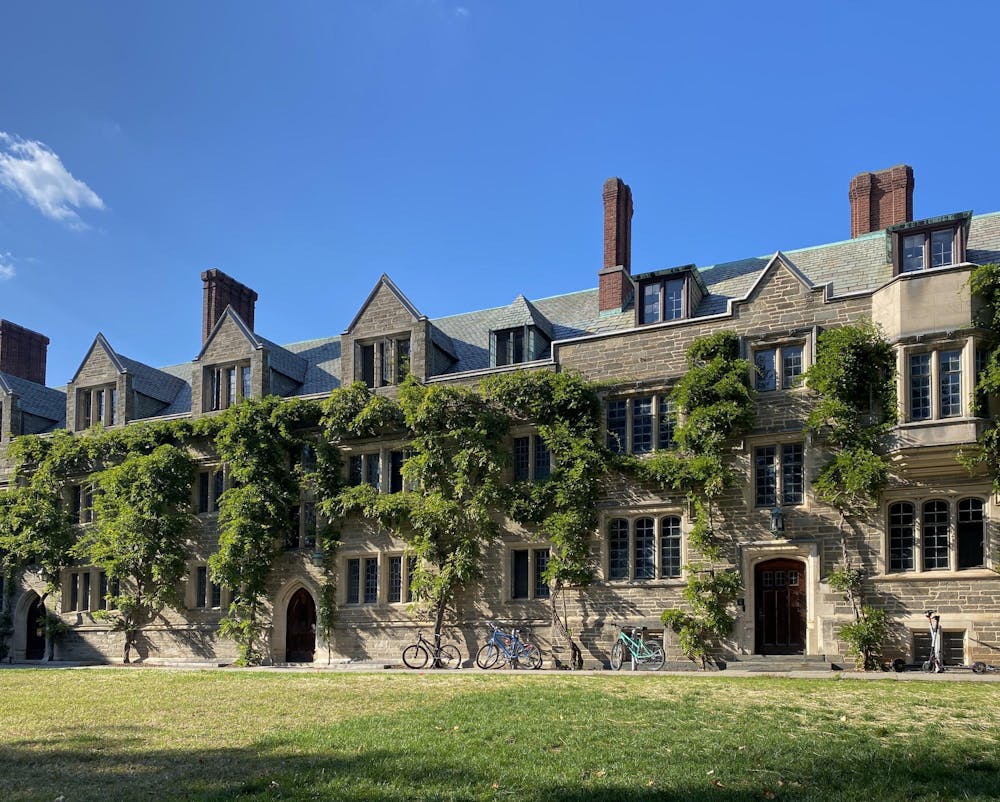As I sat in my new room, move-in debris strewn around me, I checked the weather. My eyes widened when I saw the high temperature estimates — 92 degrees, 93 degrees, 94 degrees, 95 degrees Fahrenheit. Not for the first time, I looked at my already-overworked fans and wished that my room had air conditioning.
Many Princetonians experience a lack of air conditioning at some point during their time living on campus. Students lucky enough to have it — such as those living in the new colleges — are often the subject of envy. The University has seemed content to let this inequality of housing persist, despite the fact that non-air-conditioned housing costs the same as air-conditioned housing. Students without air conditioning are simply left to buy fans and hope for the best.
Yet the temperatures this week are higher than what is deemed safe for non-air-conditioned spaces. After this summer’s heat waves, experts have noted that as temperatures exceed 90 degrees Fahrenheit, fans fail to protect against heat-related conditions like heatstroke and heat exhaustion. One expert, University of Texas Southwestern internal medicine professor Craig Crandall, stated that “if you don’t have air conditioning, you should be planning to go elsewhere long before temperatures reach 90 degrees.” Yet most students don’t have anywhere else to go, and must simply “stick it out” until temperatures decrease. They may be able to leave their rooms during the day, but the nights remain uncomfortably hot.
Not only does the lack of air conditioning harm students, disrupting sleep and occasionally making their rooms uninhabitable, but the lack of temperature and air control poses a more significant issue amid the growing climate crisis. Princeton must begin proactively updating its older residential colleges and buildings before worsening climate conditions make the change absolutely necessary.
While we already feel the effects of the temperature rise (as evidenced by this week’s heat surge and this summer’s heat waves), skyrocketing temperatures will only grow in the coming decades. In the present, we may be able to “stick it out” for a few weeks, but future Princetonians will battle far greater heat waves.
Global temperatures have been on the rise for years. The past eight years (2015–2022) have been the hottest on record globally due to the growing presence of greenhouse gases in the Earth’s atmosphere. These temperatures will likely only continue to rise: By 2100, the average U.S. temperature is projected to increase by anywhere from 3 degrees to 12 degrees Fahrenheit.
It’s not just the heat, either. There have been increasing air quality issues as climate change fuels wildfires across North America. In early June 2023, the smoke from Canadian wildfires settled over much of the East Coast and Midwest. Princeton experienced incredibly poor air quality — on June 7, for example, the air quality index (AQI) in Mercer County reached 467. An AQI of over 300 is considered to be hazardous. In July 2023, wildfires once again caused air quality to plummet in many U.S. cities.
As wildfire seasons get more severe, such incidents become more likely to happen during the school year; increasingly destructive fires could start coming earlier in May or later in October. The main way to protect against poor air quality is to remain indoors and keep central air conditioning running — something that most of Princeton’s residential buildings are ill-equipped for. If Princeton experienced the air quality issues that it did this summer when all of its students were on campus, a significant portion of the student population would be exposed to hazardous air.

A week or two of high temperatures may be uncomfortable but ultimately bearable in the short term. In the long term, however, the effects of climate change pose a real threat to students living in non-air-conditioned buildings.
I’m certainly not advocating for immediate and simultaneous construction on all residential buildings. As we’ve seen from the multiple parallel construction activities in the past few years, students suffer when there are too many simultaneous projects on campus. If Princeton acknowledges the problem now, it can begin gradually renovating buildings — and potentially include these renovations in its net-zero planning — rather than scrambling for less sustainable and more taxing solutions as the situation worsens.
The cost of this endeavor would be undoubtedly high, as it’s more challenging to add air conditioning to older buildings. It may only be feasible to install window units or ductless mini-split air conditioners until the buildings themselves are rebuilt, even if central air conditioning is a more comprehensive solution. Ultimately, whichever path it chooses, Princeton has the money, and the well-being of its students is worth the cost.
Unfortunately, this is the reality we live in — without strong action, the impacts of climate change will only grow. Princeton must be cognizant of these changes and prioritize the health and safety of its students, sooner rather than later.

Community Opinion Editor Lucia Wetherill is a junior from Newtown, PA. She is studying in the School of Public and International Affairs (SPIA), with certificates in Global Health Policy and Latin American Studies. She can be reached at lw2158@princeton.edu.








